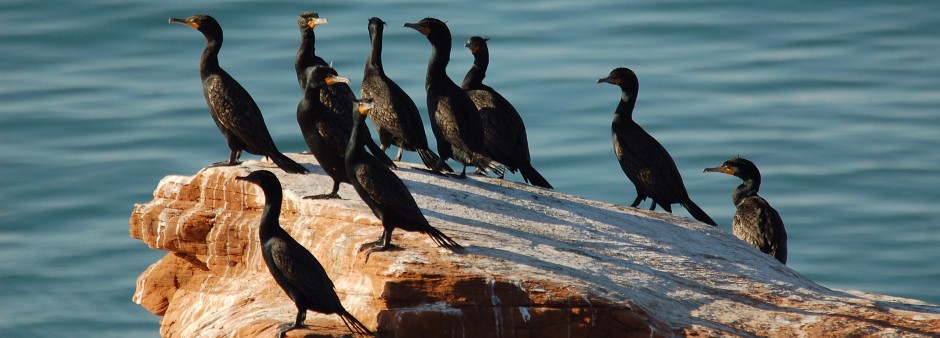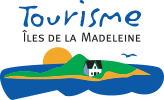

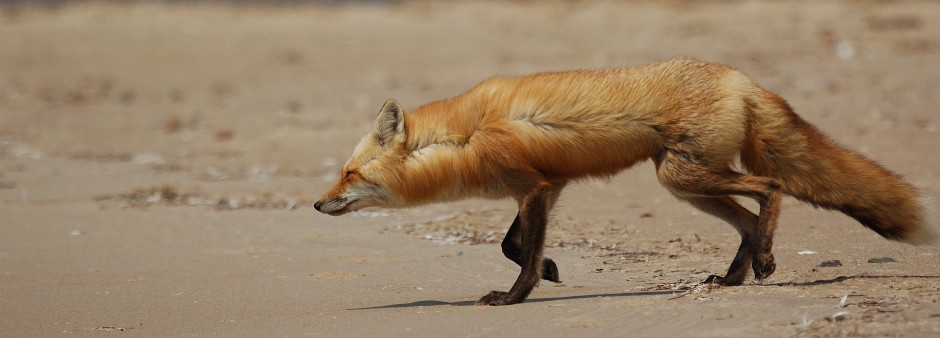
Given its modest size, the archipelago is home to a wide variety of birds and various species of mammals. Due to their location in the heart of the Gulf of St. Lawrence, the Îles de la Madeleine offer a prime site for birdlife.
Among the marine mammals, seals seem to attract more attention, certainly due to their large number and because they are a subject of great interest. Four different species of seals can be found around Les Îles de la Madeleine.
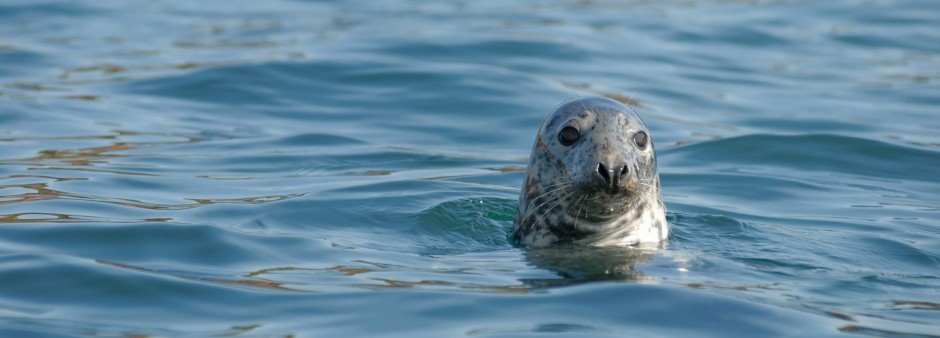
Gray seals live in temperate waters along the shores, near rocky islets and sandbanks. Their large size makes them easy to identify (adults weigh an average of 275 kg). Other identifying marks include widely spaced nostrils in the shape of a W, dark color, black head and rather long muzzle. Because of its relatively long nose, this species is often called “horsehead”. The seals seen around the Islands in summer are mostly gray seals.
The harbor seal is a much smaller animal. Average adults weigh in at around 90 kg and are much lighter in color than the gray seal. Their nose is shorter; their nostrils closer together in the shape of a V. Harbor seals spend hours lying on sandbanks, rocks and reefs which appear with the ebbing tide. When the tide comes in again, these seals go out to hunt. This species is currently under observation, as it is declining in most places along the shores of the Saint Lawrence.
Gray seals and harbor seals can be observed in their natural habitat at the east end of Île Brion, at the end of the Grande Échouerie beach in Grosse-Île, at Corps-Mort Rock and on the beach at Dune-du-Sud, just opposite the Grande-Entrée fishing port.
Various excursions are offered which allow visitors to get up close to the seals.
The harp seal is an Arctic species which migrates to the coast of Newfoundland and Les Îles de la Madeleine around the end of December. Adults have light gray fur marked with a horseshoe-shaped black saddle on their back. The harp seal's head is black.
Each year at the beginning of March, hundreds of thousands of harp seals come to the ice floes around the Islands to give birth to their pups, which are called "whitecoats".
Whitecoats have long, woolly, white fur. For the first two weeks of their life, seal pups grow at an amazing rate, thanks to their mothers' high-fat (40 %) milk. During this period, their lovely white coat peels off and their appearance gives rise to another nickname, "guenilloux", or "ragged-jacket". The pup is weaned approximately two weeks after birth and his mother leaves him on the ice to go off and mate. Once he has finished molting, the young seal is called a “beater”. His fur is now silvery and mottled with darker patches.
Excursions are offered on the pack ice. For information and reservations for whitecoat observation tours, see your travel agent.
The seal hunt is an ancient tradition with Madelinots. However, over the last few years, the hunt has been the target of a campaign by anti-hunting environmentalist groups, and most of the markets have disappeared. The decline of the fur trade put an end to the commercial hunt. Hunting now takes place on an individual basis only. As of 1983, killing whitecoats is illegal, forcing many hunters to terminate their subsistence activities.
The seal hunt is a sure sign of the end of the winter and the start of maritime and fishing activities for Madelinots. Once the herd (mouvée) is sighted offshore, preparations for the hunt begin.
If you would like to learn more about these animals, their observation or the seal hunt, don't miss the permanent exhibit at the Seal Interpretation Centre in Grande-Entrée or try the travelling exhibit "Loups-marin, au pays des Madelinots" which moves from one to another of the different Canadian museums.
This is also an Arctic species, living mainly in the waters between Greenland and the European continent. These seals occasionally migrate around the archipelago to give birth on the ice pack. An adult male weighs an average of 300 kg and is easily identified by his blue-gray color and his size.
The male has an impressive nasal appendage as well as a hood on his head that he can blow up like a balloon, doubling the volume of his head and giving him a fierce and most impressive appearance. The young of this species are called bluebacks because of their color. It is very dangerous to approach young hooded seals on the ice pack because the adults are very aggressive at this stage of their reproductive cycle.
Les Îles de la Madeleine sit on an underwater ridge in the middle of the Gulf of Saint Lawrence. Because of this, the waters around the Islands are fairly shallow and whale sightings are infrequent near the shore. However, it is possible to see on the occasion during boat excursions or during your arrival and / or departure on the ferry over to Souris (PEI) / The Islands and cruise ship of Cruises CTMA.
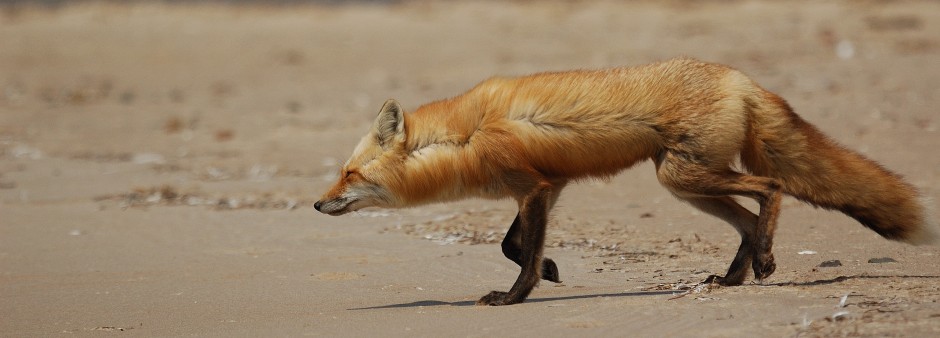
Compared to other regions in Québec, Les Îles have few species of land mammals. There are only some small indigenous mammals such as the red fox, the deer mouse, the Norway rat and the meadow vole.
Red squirrels were introduced on the archipelago at the end of the 1970s, and they have adapted extremely well to their new environment. A study shows a higher density of squirrels per square kilometer, probably because there are no predators. Note that this species can be found only on the islands of Havre-Aubert, Cap-aux-Meules and Havre-aux-Maisons.
At the beginning of the 1990s, a project was undertaken to reintroduce hares on the island of Havre-Aubert. At present, hares can be found on the islands of Havre-Aubert and Cap-aux-Meules.
An experiment with a mink farm was also carried out in the past on the island of Havre-Aubert. A few individuals escaped the farm and there is now a small resident population in the ponds around the lagoon at Havre-aux-Basques.
